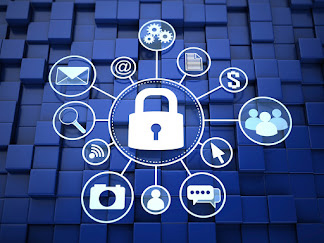8 Good Digital Security Practices for Virus Protection by Antivirus Software
What would originally be a presentation for a workshop became a post, the 8 good practices on digital security for all audiences:
1. Use
and update Antivirus
In general, one of the biggest fears of digital users is being
the victim of a computer virus, but in response to this fear, few users have an
antivirus installed
and updated. Having an antivirus and not updating it is having a door and not
closing it. That is, an antivirus to protect you depends on being updated in
its databases on new viruses. Here are a couple of reliable and free antivirus
that you can download (Yes also Mac users need an antivirus, they don't have
super powers).
· AVG
·Protegent 360 Antivirus
Software
·Avast (Windows and Mac)
Passwords became our main defense barrier against a digital
intruder, let's think about it for a moment; Before starting to talk about
servers and large internet security systems, the first thing that exists in
this chain of services is our password for emails or social networks.
3 tips to follow to have a secure password
·Use a password with more
than 8 characters in length.
·Combine the phrase using
capital letters and numbers.
·Try to change your
passwords on a regular basis.
And finally and essential do not share or publish your
passwords anywhere.
3. Log out
of all the devices you use.
It does not matter if it is a phone, a laptop or a rented
device, after using email or a social network, try to close the session you
opened. Many times we leave our computers unattended and we can be the victims
of some joke or worse, information theft.
4. Use
https in your connections
The HTTPS service is a secure communication protocol between
computers that means that not all the information that travels over the
internet travels safely and can be seen by others, that includes your
passwords. One way to understand how https works is with the following graphic,
in the first case the information can be read by everything, in the second
example it is the same search but nothing can be understood.
5. Put
lock code to devices
It does not matter if it is a desktop, laptop or cell phone of
any type, we must enable the code lock option to protect our information from
some data "thief". If you do not know how to do it, we will share
some tricks for all operating systems.
·Windows
·Mac
·Android
6. Backup
information from your devices
It might seem basic but it is common to hear stories of people
who lost all their information due to a failure of some component of their
equipment. Most people do not take it as an important activity, but in a moment
of failure or breakdown they will know its importance. A backup does not have
to be complex; it really must meet some basic rules:
·It should be as up to date
as possible, preferably no more than a month
·You must back up the most
valuable or indispensable thing that you consider within your files.
·A backup is a copy of
information; therefore it is not for daily reference use.
·Keep the storage device in
a safe place from theft or mishaps (water, variable temperatures, drops or
misuse)
Now let's talk about social media and some good habits.
7. Accept
and share only with those people you know
It is very common to find users of all kinds of tastes,
interests or activities throughout social networks, but really, what do we know
about people on social networks? In other words, in social networks we share
all kinds of information but we must be careful who can access it; a good
practice is to keep our profiles private and accept those people we know.
8. Periodically check the applications linked to
your accounts
Many of us use our network profiles to access different
internet services, or we register them on some pages to be able to share our
interests with other people. All applications that have permission from us or
that we link at some point can publish content on our behalf regardless of the
registration date. In other words, our profile can use them to send messages to
other users of the same social network. To avoid this or to control the
applications that we have registered, we can periodically review our profiles
to do so; here you can see a video for Facebook.




Comments
Post a Comment